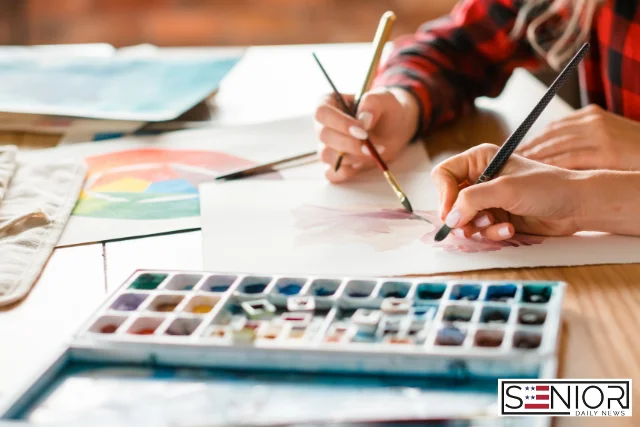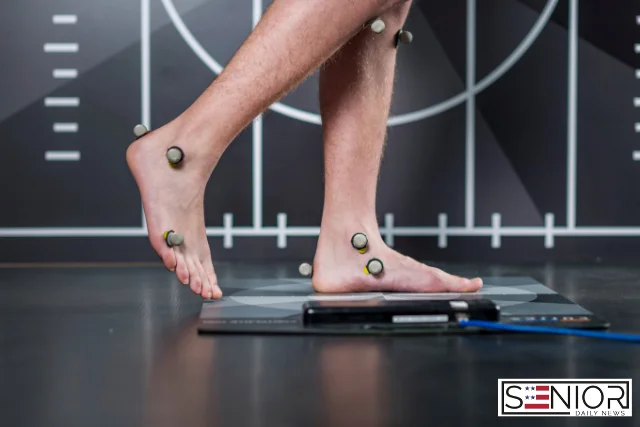Painting with Oils and Acrylics: Advanced Painting Techniques

Ask any seasoned artist and they’ll tell you that mastering painting techniques goes far beyond pushing color around. It’s about harnessing the individual strengths of different mediums, knowing painting techniques that create depth and texture, and understanding how each stroke can evoke mood. If you’re a senior hobbyist or lifelong art enthusiast in the United States, you already appreciate the joy of creative expression. Now it’s time to elevate your skills with advanced oil and acrylic approaches that make your work sing while keeping the process comfortable and engaging.
Oils vs. Acrylics: Core Characteristics to Remember
Before diving into advanced painting techniques, remember why these mediums behave differently.
- Oils stay wet for hours (sometimes days), allowing graceful blending and subtle transitions. Traditional linseed oil or modern water-miscible oils offer that classic buttery feel.
- Acrylics dry in minutes, locking each layer quickly. They clean up with water, emit low odor, and, with modern retarders or open-time mediums, can mimic oil’s slower pace when desired.
Understanding drying speed, viscosity, and cleanup requirements helps you choose the right technique—or combine both mediums—without frustration.
Surface Preparation for Longer-Lasting Results
Advanced effects rely on a stable foundation. Whether you choose oils or acrylics:
- Prime Properly: Acrylic gesso seals canvas and provides tooth. Even when working exclusively in oils, acrylic gesso works well under professional standards.
- Tint the Ground: A light ochre or gray wash (in diluted acrylic) cuts glare and helps judge values accurately.
- Texture First: If you plan heavy impasto or collage, embed coarse gel or modeling paste during this stage so the tooth is integral, not floating on fragile layers.
Let’s explore some advanced painting techniques that will take your oil and acrylic work to the next level.
Technique 1: Glazing for Jewel-Like Depth
Glazing builds transparent layers over a dry underpainting, enriching luminosity without muddying color. Oils traditionally excel here, but acrylics can achieve similar results with glazing medium.
- Best for: Atmospheric landscapes, luminous still lifes, skin tones.
- How-to: Mix a small amount of transparent pigment (e.g., alizarin crimson) with refined linseed oil or acrylic glazing medium. Apply thinly with a soft synthetic brush. Allow full drying between coats—oil glazes may take a day; acrylic glazes, about 20 minutes.
- Senior tip: Work in good ventilation and use odorless mineral spirits or water-based oils to keep the process comfortable for sensitive lungs.
Technique 2: Alla Prima (Wet-on-Wet) Freedom
Alla prima means completing a painting in one sitting, taking advantage of wet layers blending on the canvas.
- Oils offer ample working time to push pigment.
- Acrylics require a slow-dry extender to stay wet, or you can mist the palette and surface with a spray bottle.
Embrace bold, confident strokes and focus on value relationships instead of perfect details. This method keeps sessions short—ideal for seniors who prefer shorter bursts of activity to reduce hand strain.
Technique 3: Impasto for Expressive Texture
Few painting techniques capture light like thick paint. Both mediums achieve impasto, though each has quirks.
- Oil impasto: Mix pigment with a stiffening medium like cold wax or impasto gel to prevent sagging. Drying time increases but the surface remains flexible.
- Acrylic impasto: Heavy-body acrylic and modeling paste dry rock hard and lightfast. Build peaks with a palette knife in layers no thicker than ¼ inch to avoid cracking.
Try glazing over dried impasto peaks—light catches ridges, adding drama without muddying colors.
Technique 4: Scumbling for Subtle Highlights
Scumbling is the art of dragging a nearly dry, opaque color lightly over a textured or darker surface, letting underlayers peek through.
- Load a stiff hog-bristle or synthetic brush with minimal paint.
- Scrub lightly across the canvas, skimming raised surfaces.
- Practice on a test board first; too much pressure fills crevices and loses the airy effect.
Scumbling is perfect for cloud edges, aged masonry, or wispy hair. Acrylic’s quick dry minimizes accidental blending, while oil’s longer open time allows gentle corrections.
Technique 5: Grisaille Underpainting
Grisaille is a monochrome value study—typically in gray, burnt umber, or terra-verdi—laying out light and shadow before color.
- Block in mid-tones, reserve highlights, and deepen shadows.
- Once dry, apply transparent color glazes or semi-opaque layers.
- Acrylic grisaille underneath oils is safe and speeds workflow: acrylic dries fast, oils glaze smoothly on top.
This classic approach guarantees solid value structure, an essential foundation for all advanced painting techniques.
Technique 6: Sgraffito Mark-Making
Borrowed from ceramics, sgraffito means scratching through wet paint to reveal the layer beneath. It’s a playful way to draw fine lines or hair textures.
- Use a palette knife, old credit card, or the back of a brush handle.
- For oils, carve before the surface skins over (usually within six hours).
- Acrylics cure fast, so work promptly or apply an isolation coat of retarder.
Seniors find this method stimulating for fine-motor skills without excessive brush control pressure.
Technique 7: Acrylic Pouring Meets Oil Details
Cross-medium artistry adds excitement. Acrylic dirty pours—fluid color puddles tilted across a canvas—create marbled abstract backgrounds. Once fully cured (48 hours), you can overlay crisp oil glazes or palette-knife figures.
- Key safety rule: Never pour oils over tacky acrylics; wait until acrylic film is solid to prevent cracking.
- Seal the finished piece with an archival gloss or satin varnish.
Managing Color Mixing: A Few Pro Tips
- Limited Palette: Five to seven pigments (warm and cool primaries plus earth tones) minimize confusion and produce cohesive harmony.
- String Palette: For oils, pre-mix value strings (light to dark) of key hues, then paint quickly without constant remixing.
- Acrylic Retarder: If blending large skies, mix retarder or slow-dry medium directly on the palette—and keep a mister handy.
Mediums that Enhance Performance
- Oil Solvents vs. Alkyds: Seniors often prefer low-odor solutions. Alkyd mediums accelerate drying while remaining fume-free; water-miscible oils clean with water.
- Acrylic Gels: Soft-gel medium extends paint for glazing; heavy-gel builds 3D texture; matte medium cuts shine for more subtle surfaces.
- Cold Wax: Mixed into oil paint, it creates a buttery, quick-dry paste ideal for subtle impasto without excess solvent.
Studio Ergonomics for Older Adults
- Sit-Stand Easel: Adjustable height reduces neck strain.
- Lightweight Brushes: Synthetic filaments weigh less; foam grips reduce fatigue.
- Rolling Taboret: Keeps paints handy, so you’re not twisting or reaching.
- LED Daylight Bulbs: Bright, cool light reduces eye strain and shows true color.
Health and Safety Essentials
Seniors may be more sensitive to fumes and repetitive motion. Follow these safeguards:
- Ventilation: Use a small window fan or HEPA purifier.
- Gloves: Nitrile gloves protect skin from cadmium or cobalt pigments.
- Breaks: Stretch hands, wrists, and shoulders every 30 minutes to maintain circulation.
- Non-Slip Mats: Acrylic drips and oil spills happen—anti-fatigue mats protect hips and knees should a slip occur.
Planning an Advanced Painting Session
- Thumbnail Sketches: Quick pencil or digital doodles help design composition.
- Underpainting: Use diluted acrylic or lean oil washes to establish basic shapes.
- Layer Hierarchy: Work “fat over lean” in oils—each layer should contain slightly more oil than the last for flexibility. Acrylics work “thick over thin” to prevent cracking.
- Detail Pass: Refine edges, highlights, and nuanced color shifts.
- Final Glaze or Varnish: Unify surface sheen and protect from dust once fully dry (two weeks for acrylics, six months for oils).
Frequently Asked Questions about Painting Techniques
Q1: Can I combine oils and acrylics in one painting?
Yes—paint acrylic layers first and let them cure, then apply oils on top. Never reverse the order; oils are flexible and may crack if applied beneath rigid acrylic film.
Q2: How do I keep acrylic paints from drying on the palette?
Use a stay-wet palette with a damp sponge, mist the surface periodically, or mix a slow-dry medium to extend open time.
Q3: What’s the safest solvent substitute for seniors with respiratory issues?
Look for odorless mineral spirits labeled “low VOC” or switch to water-mixable oils. You can dilute cleanup water with household soap.
Q4: Do I need different brushes for oils and acrylics?
You can share synthetic brushes if cleaned thoroughly. Natural bristle brushes work best for oils but may suffer in acrylic water baths, so keep separate sets for longevity.
Q5: How thick can I apply acrylic modeling paste without cracking?
Stay under ¼ inch per layer. Let each layer dry fully, then build additional texture gradually to avoid structural tension.
Q6: Why does my oil glaze look cloudy?
Excess medium or a waxy residue can cause fogginess. Thin your glaze mixture, use refined linseed oil or alkyd medium, and apply in low humidity.
Image Source: Canva






